Sugar- love it or hate it, it is something you cannot ignore. Knowingly and unknowingly we end up consuming more than the recommended daily allowance of sugar in our diet.
Sugar is a recent discovery just a few centuries old. As late as the 18th century, it was a luxury in European households. Before that only natural sweeteners were used in making desserts. It was only in the 19th century that it started becoming a necessity in our daily diets. Unlike us, sugar was not a part of the staple diet of our ancestors and we can see the difference when we compare their health to ours today.
Sugar is Around Us

From cola drinks to juices, candies, burgers, ice creams, cookies, cereals, granola bars, even yogurt, we are surrounded with sugar in visible and invisible forms. These products just provide empty calories with no additional benefits to the body, as sugar has no vitamins or minerals in it.
Dopamine found in sugar gives the same kind of high to the brain as cocaine and other drug substances. Someone suffering from sugar addiction can experience the same kind of withdrawal symptoms as with when trying to give up substance abuse.
Harmful Effects of Sugar

Sugar as a substance is very impartial, and it makes sure to damage all parts of your body equally! Leading to obesity and attention deficit disorder, especially in kids, damaging and accelerating tooth decay, being a leading cause of diabetes and heart diseases, promoting mood swings and laziness, sugar takes control of your whole body and slowly but steadily ruins it.
Sugar is so addictive, that every time you consume it, you need to consume more than the previous quantity in order to achieve the same level of satisfaction and satiation as the last time.
Realizing the long-term ill effects of sugar and making conscious efforts of cutting it out from your diet can be a very daunting task. Not only does one have to become mentally very strong to resist temptation all around, the fructose content in sugar puts up a mighty fight in the form of withdrawal symptoms in its efforts to dissuade you from abstaining from sugar.
Before starting on sugar cut out and after becoming clean of sugar addiction, one can follow a few steps that can help them deal with the withdrawal symptoms before and after.
How to Deal with the Sugar Withdrawal Symptoms
Stay motivated:

Being internally motivated and having your external support system of family and friends around you is very important. You will constantly need assurances and motivation on why your decision to cut out sugar is good for you and your body.
Clean your kitchen of temptations:

One of the first and most sensible things to do before you try to cut out sugar from your diet is to clean out your pantry of all temptations stocked there. Get rid of all the chocolates, cereals, juices and cola from your kitchen. The less you will see tempting stuff, the more you will be able to stick to your resolve.
Instead make sure you have your jars filled with dry fruits and dark chocolates and your pantry is stocked with fruits and other healthy and naturally sweet options.
Preplan your menu:

Knowing what you are going to have for your next meal gives you a psychological relief that though you are sacrificing your favorite foods, what you are opting for is yummy and yet healthy. Not planning in advance makes deciding on what to cook very difficult, and this leads to giving in to temptation very easy.
To begin with, the following changes can be made to your daily routine over a period of a few weeks to ease in to reduction of sugar intake. Studies suggest that for a person to get used to any routine positive or negative in their lifestyle, diligently following that course for 21 days puts the body in the habit of the routine followed.
First week:
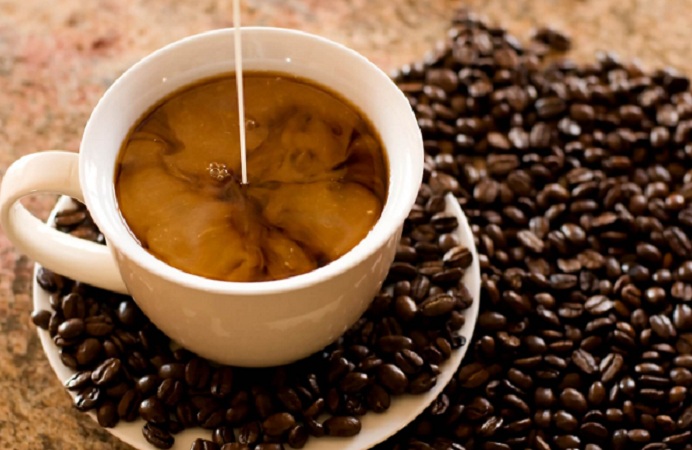
In the first week, instead of completely cutting down on sugar, replace the sugar in your daily intake of tea and coffee with natural sweeteners like honey, coconut syrup, maple syrup and stevia. Try and avoid artificial sweeteners like aspartame and sucralose.
Second week:
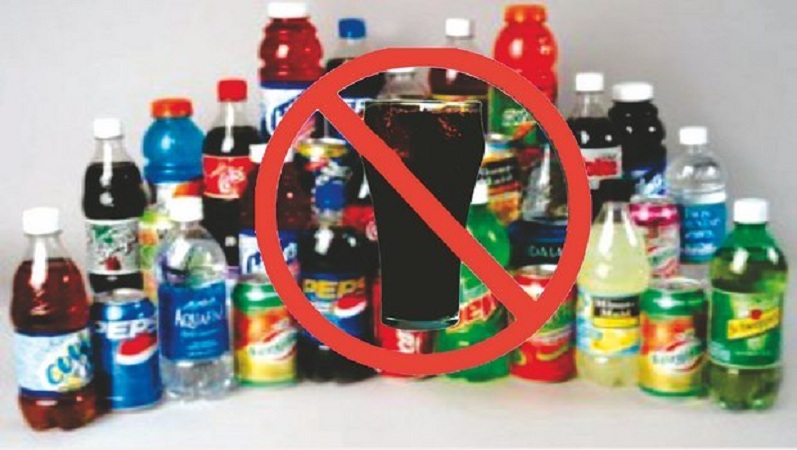
Once you start getting used to the taste of replaced sugars, try to cut down or eliminate sugary drinks like colas, packaged juices and sweetened lemonades from your diets.
Third week:
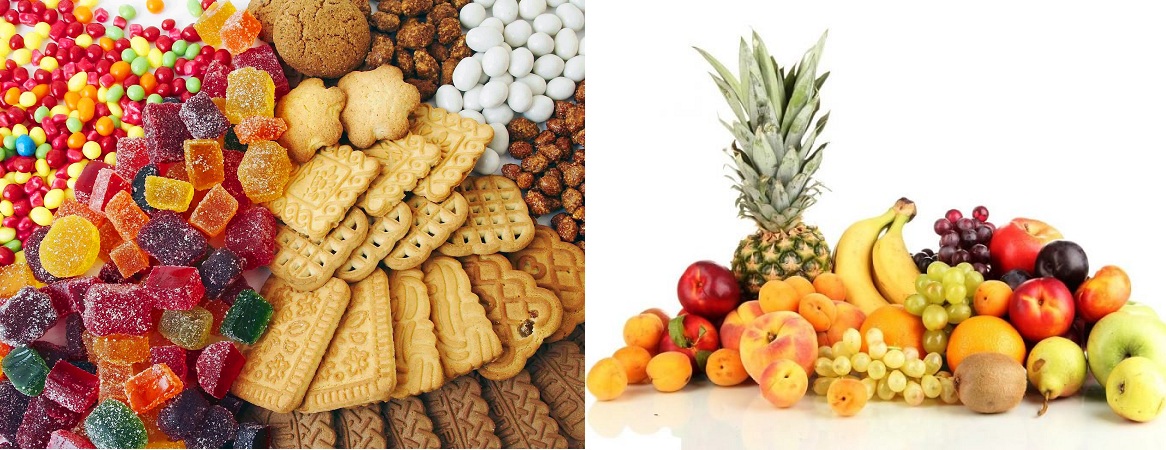
Next in line of fire should be your supply of candies and desserts. They can be easily replaced with fruits, dry fruits and home made cakes and breads made with natural sweeteners as opposed to sugar.
Fourth week:

By the fourth week, you will be pretty used to the changes that you have made in your diet, and now you can swap processed food with fruits and vegetables and use whole grain flour in your meals.
Though in the above plan, you are cutting out sugar from your diet in a phased out manner, be prepared to still face sugar withdrawal symptoms. Completely cutting sugar out from your diet as opposed to doing it in a phased out manner is also an option but one should be prepared to face withdrawal symptoms, which might be severe if following a cold cut out of sugar.
Symptoms of Sugar Withdrawal
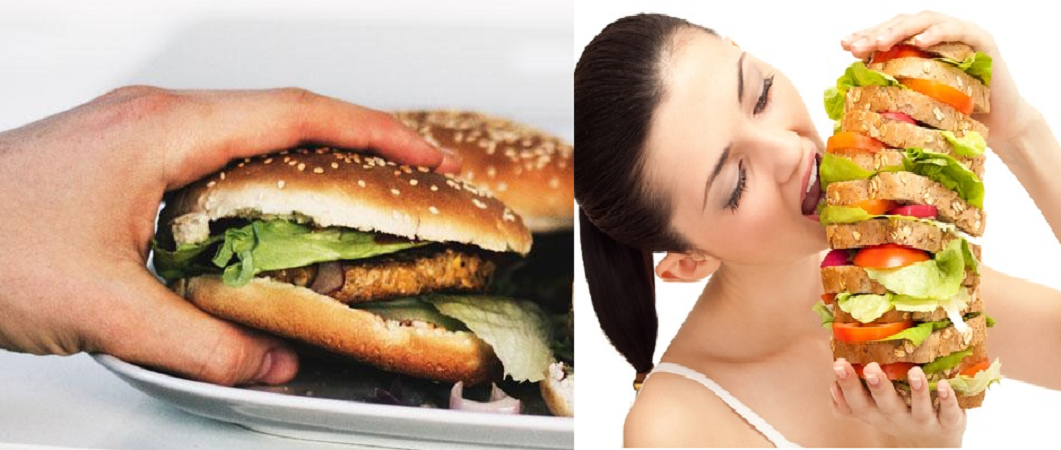
Following are a few symptoms, which you might experience but you need not be worried about. Your body will go through the following process before you become clean!
You feel top of the world:

When you begin something new, especially if it is something that is beneficial for your well being, you are very motivated and feel top of the world being in control of yourself.
As the body does not immediately register the pause in fructose supply, cutting out sugar does not feel that big a challenge and gives one a satisfying and “I can do it” feel.
Headache, Fatigue, hunger and cravings:

One of the first few side effects of breaking from your routine, whether it is caffeine, sugar or drugs, is a splitting headache, feeling unusually lethargic and getting hunger pangs. These are the simplest and most effective symptoms telling you of a skip in routine.
At this point, no matter how many fruits you eat, or how much water you drink, your craving for sweets will be at its peak.
Do not worry and remember the reason you started on this journey. If you stay strong, the worst will pass. Make sure to take a high protein diet as well as keep munching on small snacks like fruits and drink plenty of water.
Body aches, bloating, nausea and diarrhea:
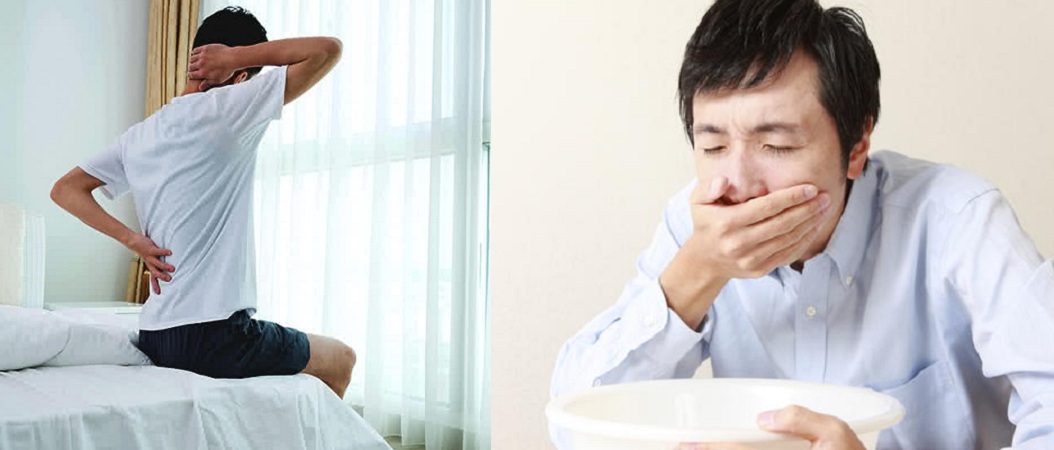
If someone was used to a very high sugar diet on a daily basis, then they can experience body and muscle aches as a result of the body feeling drained and fatigued. Bloating, feeling nauseous and in extreme cases diarrhea can also be a side effects of sudden cut out of sugar.
Do not panic. Stay strong and motivated and the body will slowly but surely start getting used to living without additional pumping of fructose in the system.
Anxiety, Depression and Chills:

Unbelievable but at its peak, the sugar withdrawal can actually leave you feeling anxious and depressed. All the fight you are putting up against sugar will seem fruitless at that point.
Make sure close friends and family supporting you through this tough time surround you and help you stay committed to your cause.
The blues start to pass:
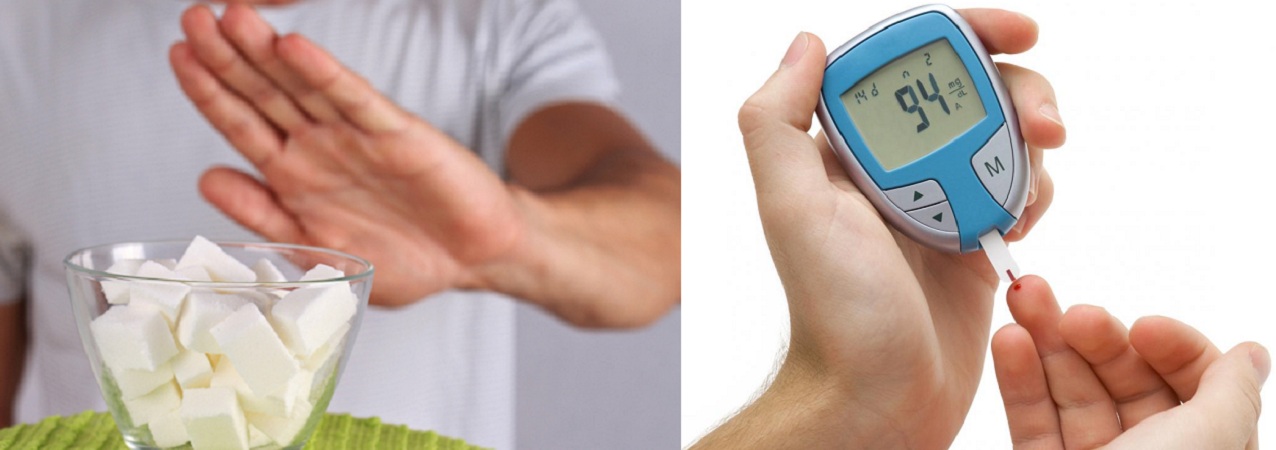
You did it! The worst is over and your body slowly but surely starts accepting the changes in your diet. Your withdrawal symptoms start mellowing down, making you feel good about yourself and secure in the knowledge that you are over the worst. You can now commit to being clean of sugar addiction by making conscious healthy choices not only in what you eat but also in what you stock up in your house.
Having removed sugar successfully from your daily routine, one needs to make simple changes in their diets so that they can keep their sugar cravings in check.
Following are a few things that can be done to keep sugar cravings at bay
Fiber, fiber and more fiber:
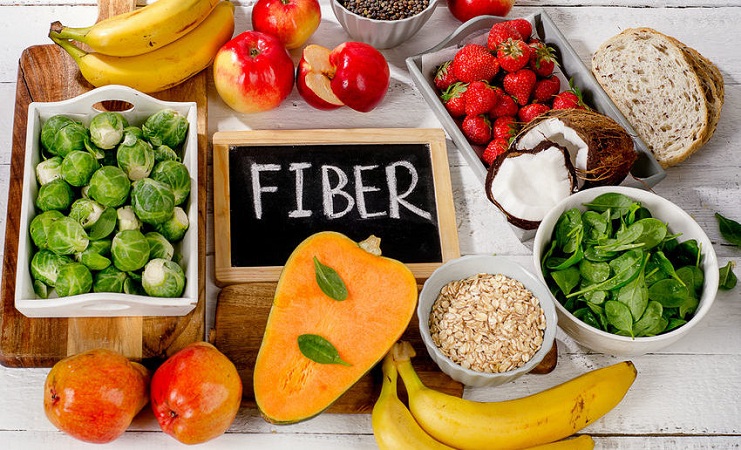
Fiber rich food helps a person feeling full for a long period of time as the fibrous part of the food does not get digested in the body as it passes through. This not only helps in reducing sugar and hunger pangs, but also helps in preventing sudden drops in sugar levels in the body.
The only caution that has to be exercised is to drink lots of water otherwise the person can end up being constipated.
Fiber rich foods include nuts, beans, vegetables and fruits like apples, banana and avocado.
Up protein intake:
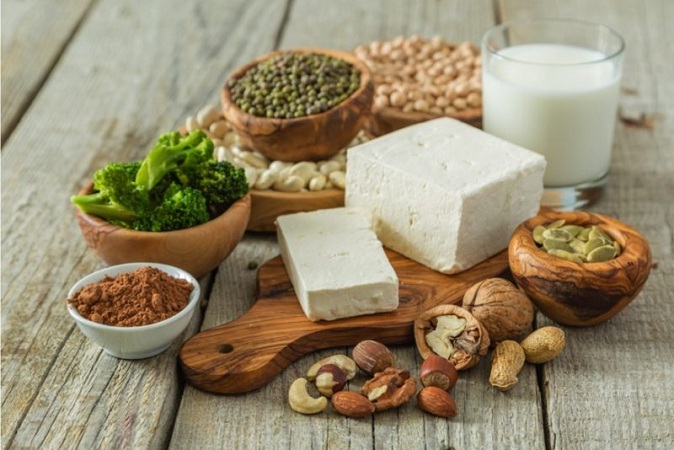
A drop or irregularity in blood sugar levels is one of the major causes of sugar cravings. A diet rich in protein helps curtail this problem as protein not only helps in cutting down the hormones that make you feel hungry but also in maintaining normal sugar levels.
This automatically helps in reducing sugar withdrawal symptoms. Protein rich foods include lentils, meat, fish, eggs and cottage cheese. The content of protein becomes very high in sprouted lentils.
Yes, you can eat healthy fat!

Avocados, extra virgin olive oil, fish, chia seeds, walnuts, cheese, dark chocolate, all of these yummy foods are a rich source of super healthy mono saturated fat. These fatty foods just like fibrous foods help you in feeling full for a longer period of time, as the body takes a lot of time to digest them. They also help in regularizing the blood sugar levels in the body.
So next time you feel like binging, keep these snacks handy and you have a win-win situation!
Hungry or thirsty?

Until one is very conscious about their water intake, it is one thing we tend to exclude from our daily schemes of things. A lot of the times when we start feeling hungry, even though our last meal was not that long ago, just have a glass of water. You will be surprised that on most occasions your hunger pangs will pass.
We often tend to confuse our body’s need for water with need for food, and so every time you feel hungry it is best to have a glass of water and wait. If pangs still persist, then feel free to indulge in a healthy power snack.
Staying hydrated is very important, as it improves the functioning of your body as well as helps you in feeling satisfied.
Incorporate probiotics in your diet:
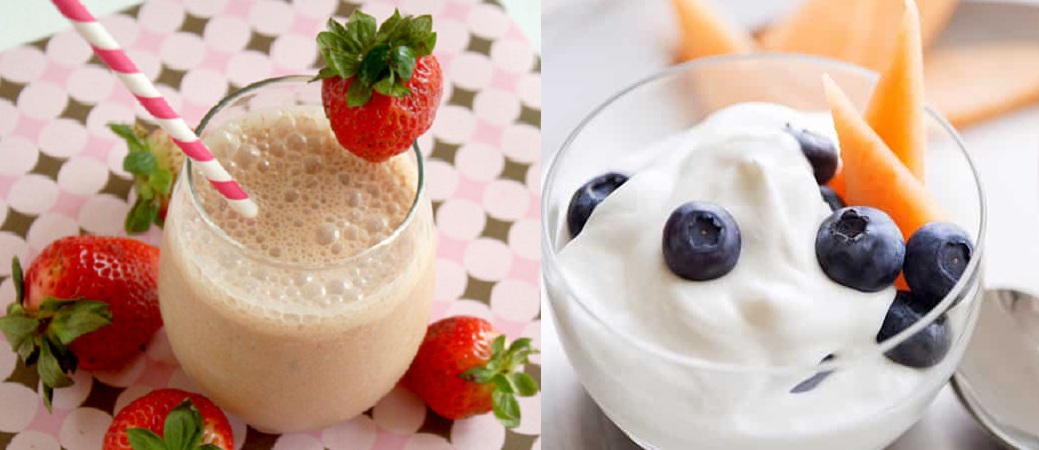
Probiotics help the growth of good bacteria in your gut, which is very important for well being of the stomach and digestive purposes. Diet rich in probiotics helps in reducing and controlling diarrhea and nausea.
The best source of probiotics is yogurt. Not only is it a rich source of calcium and bacteria, it can be mixed with fruits and natural sweeteners to satisfy the sugar cravings.
Introduce fruits in your diet:
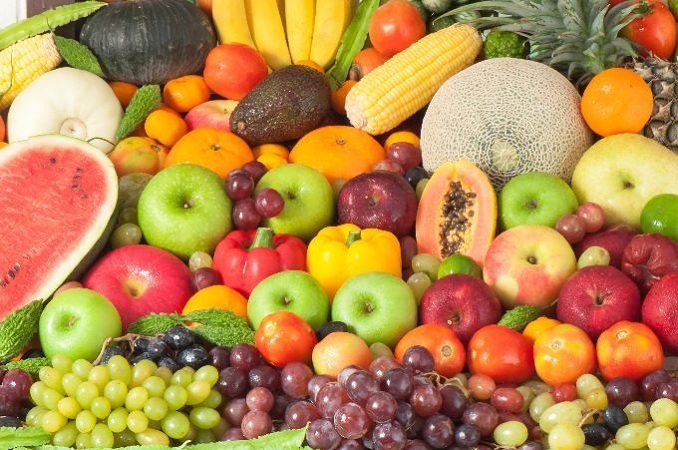
Fruits have natural sweeteners, which not only satiate your cravings for all things sweet, but also are very beneficial for your body as they are full vitamins, minerals and water. There is no dearth of variety in fruits, so you cannot complain of getting bored of eating the same thing again and again.
Understand what you are buying:
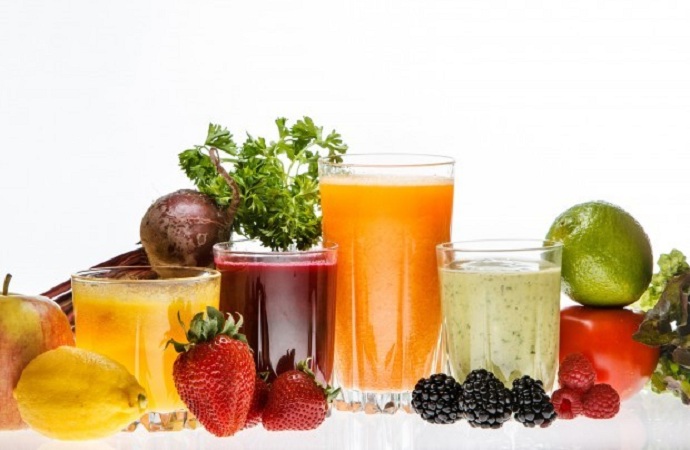
As a healthier option we end up buying packaged fruit juices in the market. They are nothing but high contents of sugar and cornstarch syrup. The actual fruit content in these is negligible and in the end you end up consuming may be not as much sugar as a cola drink, but still empty calories in the name of juice.
It is better to buy or make fresh fruit juice if out in the market or at home, in case you are not a big fan of eating fruits in their raw form.
Something as simple and as healthy as yogurt when bought off the counter becomes an unknowing source of sugar. Better is to make your own yogurt at home or buy plain natural yogurt in the market. You can add cut or pureed fruits at home to sweeten it, secure in the knowledge that you are not consuming unwanted sugar or artificial sweeteners.
Replace your sweeteners:
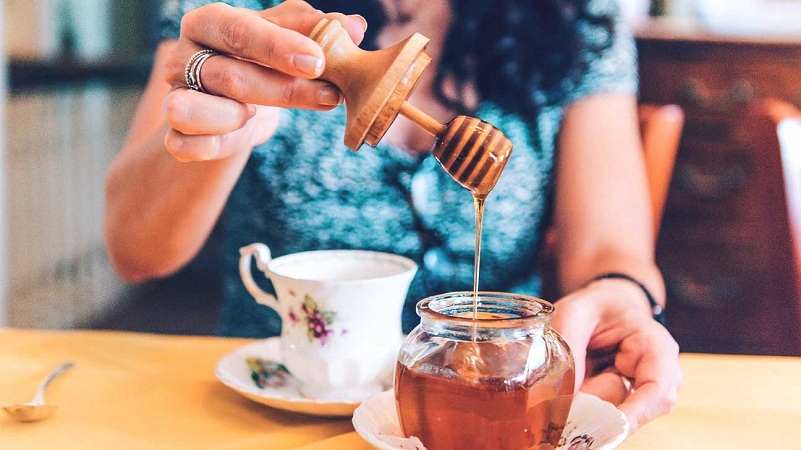
When cutting out sugar from your diet, the idea is to cut out the excess unwanted sugars that we were consuming. It does not necessarily mean that we completely do away with sweet.
Table sugar can be replaced with natural sweeteners like honey, stevia leaves, jaggery (made from sugar cane juice), dates, coconut syrup and unprocessed brown sugar in limited quantities. Though you will need a little time to get used to the taste of these, try and test to find which one works best for you.
Be sure of where you source your natural sweeteners, as the market is flooded with highly processed and genetically modified products. Like in the case of honey, organic is best and in the case of stevia leaves, if you cannot grow them yourself, then be sure to buy the pack with green stevia leaves as it is the least processed one. With the leaves, be sure to consume only the recommended dosage as using quantities more than mentioned can be harmful.
Beware of zero sugar products:

Nowadays the markets are flooded with products claiming to have zero sugar in them. In these products the sugars are normally replaced with Sucralose, which is a modified form of table sugar, which unlike normal sugar does not get absorbed or digested in the body.
As a result of this, though most of it passes from the body in the urine, a small percentage is unable to pass out, getting accumulated in the gut leading to dangerous and harmful side effects if consumed over a long period of time.
Precautions to be taken:
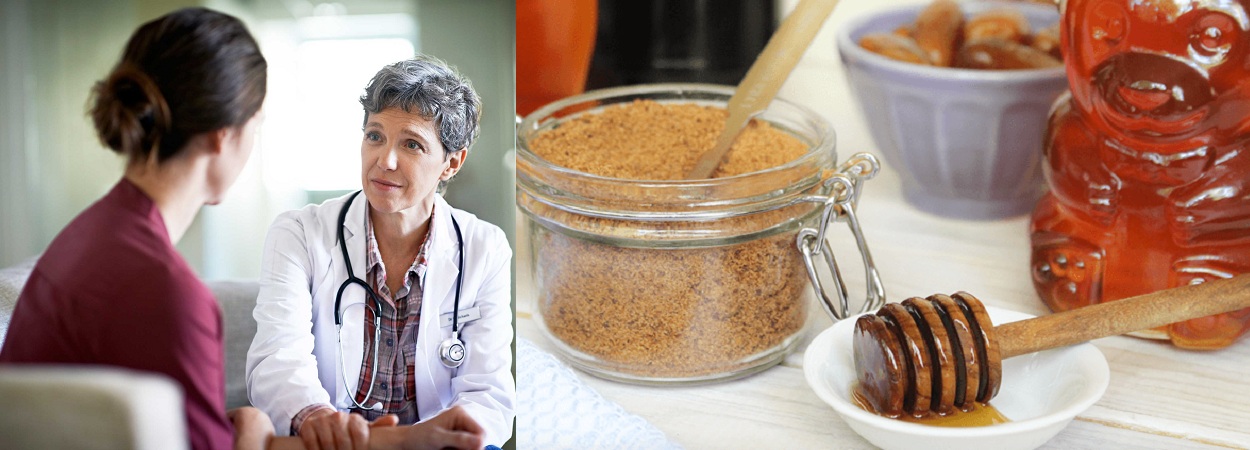
With sudden reduction of sugar supply to the body the blood sugar levels can drop significantly resulting in hypoglycemia. Make sure you are replacing add on sugar with natural sugar at frequent intervals by consuming fruits, dates, dry fruits and dark chocolate.
If you are diabetic, make sure to consult your doctor before making any major alterations to your diet, even though you plan to do it for a healthier you.
The best way to cut down sugar is to do it on piecemeal basis, where you cut out one family of sugars at a time. This is not only a more healthy way of doing it, but it will also help you in sticking to your resolve over a long time.
Conclusion
The long and short of it is, the sooner you realize the ill effects of sugar and take control of your body, the better it is for your physical, emotional as well as mental well being. So, start cutting down on your sugar consumption from now and get a fit and healthy body.






